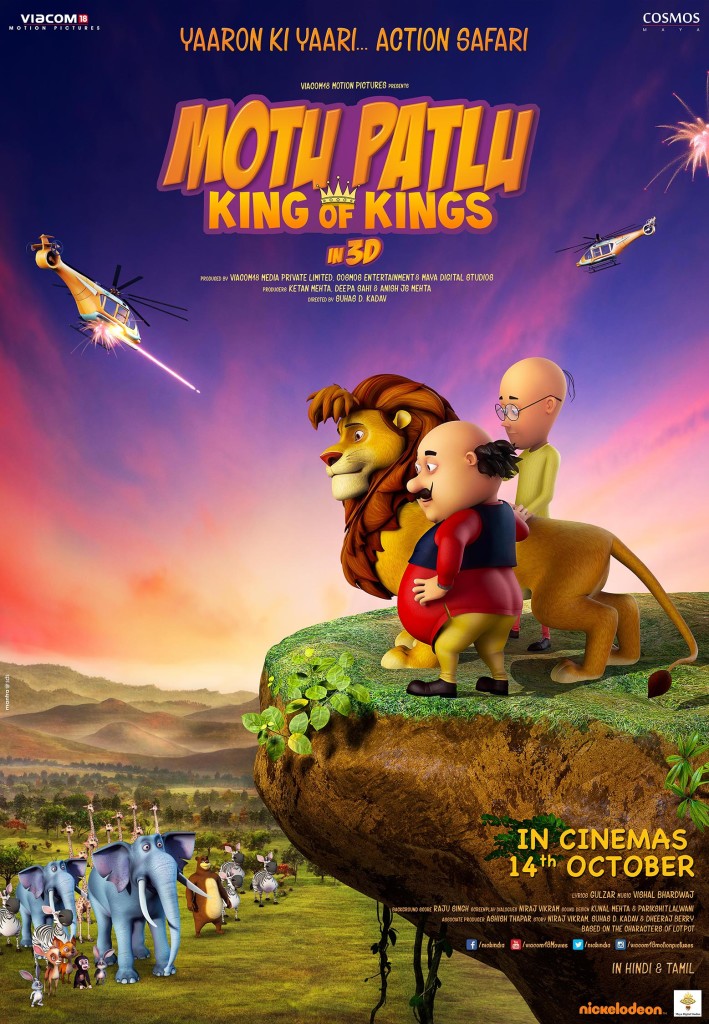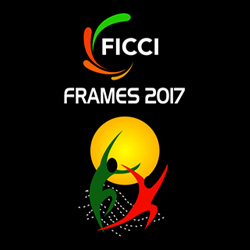Animation continues to endow substantial opportunities for imaginative filmmakers. The year 2016 saw the Indian animation industry touching new heights. However, animation’s primary market continued to be for kids in the age group of zero to 14 years in the country.
The animation industry in India registered a growth of eight per cent in 2016, with revenues amounting to Rs 15 billion. Animation IP production has grown at a CAGR of close to eight percent between 2011 and 2016. In 2016, it recorded a y-o-y growth of 8.7 per cent resulting in the domestic content production picking up. Domestic animation IP production across TV and digital domains has picked up dramatically. Additionally, advent of global VOD players such as Netflix, Amazon Prime and YouTube Kids in India is further proliferating the demand for original content.
Together, revenues from outsourced TV and film projects accounted for around 85 per cent of the total animation service turnover in India in 2016. Conversely, the domestic market remained tepid, but exhibiting strong growth – albeit on a smaller scale. TV projects continued to dominate the animation services market. Animation service for digital advertising is expected to register a CAGR of more than 24 per cent in the same period.
Investment and collaboration opportunities between animation studios and broadcasters in India have picked up, with the latter paying as high as Rs 1.5 to four million per 30-minutes of animation content.
Indian animation film space has seen only a handful of domestic productions like Motu Patlu King of Kings and Chhota Bheem: Himalayan Adventure, over the last few years. Production houses have been giving animated features a cold shoulder owing to limited returns. Domestic animated features struggle at the box office due to under-penetration of screens and direct competition with high quality Hollywood animated content.

Regional animation film space is also starting to pick up in India- positive reviews from audience for Chaar Sahibzaade 2 being an example. Punyakoti, currently under production, is likely to be India’s first-ever animation feature in Sanskrit, with 30 independent animators working on it.
The Indian ad space has started witnessing diverse styles of animation in 2D, 3D, stop motion, puppet animation and other formats. In 2016, Rajasthan Tourism appointed Ogilvy and Mather – an advertising agency – and Studio Eeksaurus – an animation studio – to refurbish and create a fresh version of its tourism campaign. The team created a new logo, the depth of which was represented by the use of clay and sand relief forms and a distinction animation method.
The ingress of OTT platforms has seen the consumption of short form and preschool content rising. The advent of digital has also been a boon for smaller studios, which face challenges to find airtime on broadcast TV.
Digital players are also producing their own content. Sony LIV, the digital video entertainment platform of Sony Pictures Networks India (SPNI), introduced a premium kids’ content section called ‘LIV Kids’ on its platform. The content for the section is produced by Sony and majorly comprises famous nursery rhymes.
The recognition and brand awareness of several IPs has paved the way for growth in merchandising as well as increase in the number of collaborations and cross promotions in the animation industry.
Trends observed in the animation industry are:
Creators focussing on animated shorts:
In place of articulating themselves by means of a full-length movie, several Indian content creators are switching to making animated shorts and travelling around the world for numerous prominent film festivals. In 2016, Ishan Shukla’s Schirkoa became the first Indian animated short film that qualified for Oscars. It also premiered at the LA Short Film Festival, bagging the Best Animated Short award.
Focus on original Indian shows:
The emphasis on original Indian shows based on the establishment of a new business model that underpins the importance of characters has emerged. The growth of e-commerce has led to more opportunities for diversification and monetisation through sales of merchandise.
Challenges for the animation industry:
Animation films not doing well at the box office
Despite India being among the most flourishing markets in the world in terms of the number of films produced, animation is yet to make an impact, particularly in the domestic content category. For studios in India, despite having access to technology, manpower and infrastructure, the budgets to make quality animated movies are not available.
No set standard for animation education
Currently, there is no benchmark for animation education and training in India. The country is in a dire need of a guidance centre, either funded by the government or privately-run, to establish benchmarks for animation education.
A major proportion of animation studios in India have been working on the principle of quantity rather than quality. This has led to Indian animation lagging behind more developed markets in terms of sharpening the budding talents.
While outsourcing has been a major driver of the vigorous growth in India’s animation industry in recent years, competition from neighbouring countries with even cheaper wages is intensifying. A blend of both state-led investment and new talent is being tactically nurtured in the animation space in other Asian countries.
With the AVGC industry rising high globally, India is on its way of joining the list of countries that boast a robust animation landscape. Initiatives for the furtherance of the industry in India are being undertaken by the central and a number of state governments.
India’s first training institute devoted to animation, visual effects, gaming and comics is going to be established in Mumbai. In 2017, the government authorised to allot 20 acre of land in Goregaon Film City to set up the National Centre for Excellence for Animation, VFX, Gaming and Comics. Karnataka’s AVGC Policy comprises developing a Centre of Excellence for stimulating AVGC education in the state and establishing Digital Art Centres to carry out digital art and animation curriculum in certain fine art schools across Karnataka. Government of Telangana is also aggressively supporting AVGC sector and is planning to set-up an incubation centre called ‘Innovation in Multimedia, Animation, Gaming and Entertainment’ (IMAGE) in Hyderabad, which would provide an ideal environment for businesses in the animation, visual effects, gaming and comics industry. The Government of Gujarat is pursuing investments to launch an AVGC lab in the state that would provide a number of facets in the Gujarat AVGC sector a technological boost.
Government of India has permitted 100 per cent FDI in the animation industry through automatic route on a condition that it needs to be in agreement with the Reserve Bank of India guidelines.
With the shifting mindset of viewers, animation holds the potential to develop into one of the most desirable avenues for entertainment and storytelling in India. On the other hand, this would require a major impetus from the government in the form of incentives for talent and IP development along with an evolved approaches and attitude on the part of content creators.
